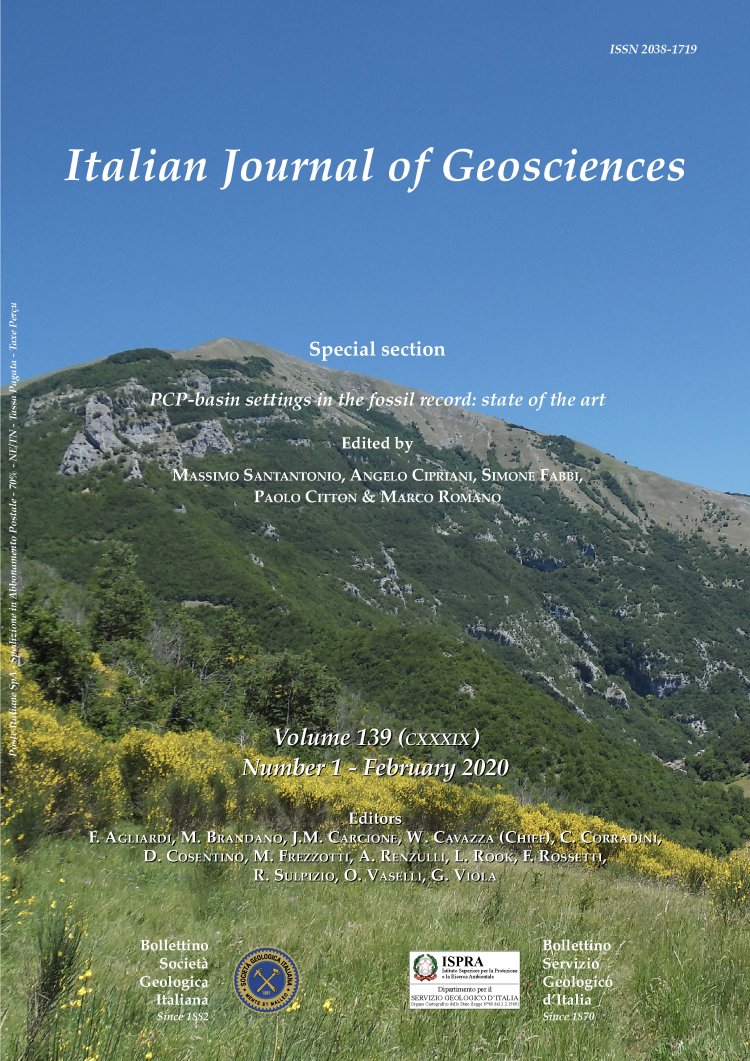
Mass-transport deposits from the Toarcian of the Umbria-Marche-Sabina Basin (Central Italy)
Angelo Cipriani (1), Costantino Zuccari (1), Giulia Innamorati (1), Maria Concetta Marino (2) & Fabio Massimo Petti (3)
(1) Dipartimento di Scienze della Terra, “Sapienza” Università di Roma. Piazzale Aldo Moro 5, 00185 Rome – Italy.
(2) SPPR, Università di Catania. Via San Nullo, 5/I, 95123 Catania - Italy.
(3) MUSE - Museo delle Scienze di Trento, Corso del Lavoro e della Scienza 3, 38122 Trento, Italy.
Corresponding author e-mail: angelo.cipriani@uniroma1.it
Volume: 139 (2020) f.1
Pages: 9-29
Abstract
Mass-transport deposits (MTDs) intercalated in slope/basinal successions, produced by submarine collapses and mass flows, are generally constituted of allochthonous elements sourced from platform margins. Here we present a noticeable exception where Toarcian calciclastic deposits made of pelagic carbonate elements are embedded in other pelagic carbonates. Selected outcrops pertaining to the Rosso Ammonitico Fm of three different pelagic carbonate platform (PCP)-basin systems were studied. The pelagic successions of the study areas onlap Early Jurassic structural highs. These clastic bodies partially replace the typical Toarcian reddish marls and shales of the Umbria-Marche-Sabina palaeogeographic Domain at different stratigraphic levels. The clasts range from blocks to megablocks; extraclasts of Corniola facies (Pliensbachian) and, sporadically, of Calcare Massiccio peritidal carbonates (Hettangian) are associated with Rosso Ammonitico intraclasts.
The internal architecture of the MTDs and their emplacement processes, as well as their source and accumulation areas, were identified. Three distinct lithofacies characterise the clastic bodies, each one corresponding to a different emplacement process or to a different portion of the flow. The occurrence of lithified megablocks (>20 m across) of Corniola Fm suggests the exhumation of the buried portion of the unit. Synsedimentary extensional tectonics is the most likely triggering mechanism.
Sedimentological analysis, coupled with geological mapping of the study areas, reveals the key role played by PCPs in the genesis of these MTDs. The early Toarcian reactivation of Hettangian palaeofaults bounding the structural highs is inferred. These faults, characterised by moderate offsets, crosscut the onlap wedges of the hangingwall successions, exhuming the older and lithified portion of Corniola Fm. Once become inactive, the fault planes were then eroded producing palaeoescarpments. Their backstepping, coupled with seismic shocks, produced the accumulation of the study clastic bodies.
Keywords
Get Full Text